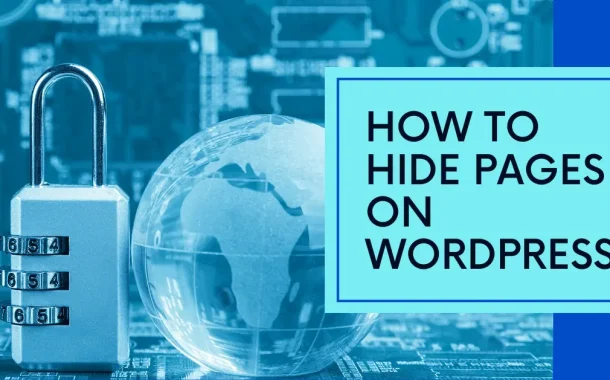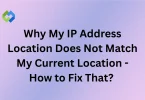Sometimes, you have pages with only important information for a short time, like event details or limited-time offers. You might want to hide those pages once the event is over or the offer expires. Some pages have secret stuff, like behind-the-scenes stuff or things only for the website owner to see. These pages need to be hidden to keep everything safe and private. Hiding pages can also help with how your website shows up in internet searches.
Table of Contents
Table of Contents
Page Visibility Settings
These visibility settings provide granular control over who can access your WordPress pages.
Public Visibility
- Description: When a page is set to “Public,” it means that the page is accessible to anyone who visits your website.
- Functionality: Public pages are visible to all visitors, including search engines like Google.
- Use Cases: Ideal for pages containing information meant for the general public or SEO purposes.
Private Visibility
- Description: Choosing “Private” for a page restricts its visibility to only users who are logged into your WordPress site.
- Functionality: Private pages are not visible to the public or search engines; only authorized users can access them.
- Use Cases: Useful for confidential or internal content, such as administrative pages or draft content under development.
Password Protected
- Description: Pages set to “Password Protected” require visitors to enter a password before they can view the content.
- Functionality: The page remains hidden until the correct password is entered, after which it becomes accessible.
- Use Cases: Helpful for sharing sensitive information with specific individuals or groups while still maintaining some level of accessibility.
Reasons to Hide Pages on WordPress
These reasons demonstrate the importance and versatility of hiding pages on WordPress to maintain control, security, and relevance over your website’s content.
Content Under Development
When you’re creating a new page on your WordPress website, sometimes it’s like cooking a meal – you want to make sure everything’s just right before serving it up to your guests. Similarly, when you’re working on a page, you might want to hide it until it’s fully cooked, polished, and ready to be seen by everyone. This way, you avoid showing a half-finished dish to your visitors, maintaining a professional appearance and preventing any confusion or disappointment.
Hiding pages while they’re still in the oven gives you the space to work without any pressure. It’s like having a quiet kitchen to yourself, where you can focus on adding the perfect ingredients and refining your recipe. Once everything’s cooked to perfection, you can unveil your masterpiece to the world, ensuring that your visitors get to enjoy a delicious and satisfying experience without any half-baked surprises.
Member-Only Content
Imagine you’re hosting a special party, and only certain people are invited – maybe it’s your closest friends or members of a club you belong to. Similarly, on your WordPress website, you might have content that’s exclusively for certain members or subscribers. By hiding these pages, you’re like the bouncer at the party, making sure only the guests get through the door. This way, you can create a sense of exclusivity and belonging for your members, offering them something special that’s just for them.
Hiding member-only content adds an extra layer of privacy and security. It’s like having a secret clubhouse where only the chosen few are allowed inside, away from prying eyes. This ensures that your members can enjoy their exclusive perks and benefits without worrying about unauthorized access or unwanted guests crashing the party.
Temporary Information
You have news or announcements that are like a shooting star – they shine brightly for a moment, then fade away. Similarly, on your WordPress website, you might have pages with time-sensitive information, like event details or limited-time offers. After the event ends or the offer expires, you don’t want these pages hanging around like old decorations. By hiding them, you’re like a cleanup crew, tidying up and removing anything that’s no longer needed. This keeps your website fresh and relevant, ensuring that visitors only see what’s current and useful.
Hiding temporary pages helps prevent confusion or disappointment among your visitors. Imagine if you invited people to a party, but when they arrived, they found out it had ended hours ago! By hiding outdated information, you’re like a considerate host, making sure your guests have a pleasant experience without encountering any expired invitations or stale content. This way, you maintain a positive reputation and keep your visitors coming back for more, knowing they can always find the latest and greatest on your website.
Administrative Pages
Behind the scenes of your WordPress website, there’s a whole world of technical stuff and backstage operations. Some pages contain information that’s like the blueprint of a building – it’s important, but not everyone needs to see it. These administrative pages might include settings, configuration options, or backend data that are crucial for running your website smoothly. By hiding them from public view, you’re like a stage manager, ensuring that everything runs like clockwork without any distractions or disruptions.
Keeping administrative pages hidden helps protect sensitive information and maintain website security. It’s like locking the door to your office, keeping confidential documents safe from prying eyes and potential intruders. This way, you can focus on managing your website without worrying about unauthorized access or data breaches. By maintaining a secure and organized backend, you ensure that your website stays in top shape, providing a seamless experience for both you and your visitors.
Sensitive Information
Just like you keep your diary hidden away from curious eyes, certain pages on your WordPress website may contain sensitive or confidential information that’s meant for your eyes only. This could include things like personal data, financial records, or private communications. By hiding these pages, you’re like a guardian of secrets, ensuring that sensitive information stays safe and secure, away from prying eyes and potential threats. This way, you can have peace of mind knowing that your confidential data is protected from unauthorized access or misuse.
Hiding sensitive information helps maintain trust and credibility with your visitors. It’s like being a trustworthy friend who respects boundaries and keeps private matters confidential. By safeguarding sensitive pages, you demonstrate your commitment to privacy and security, building a strong foundation of trust with your audience. This trust is essential for maintaining positive relationships and ensuring that visitors feel confident and comfortable engaging with your website.
Custom Landing Pages
You’re hosting a special event and you’ve created a stunning invitation that’s just waiting to be revealed. Similarly, on your WordPress website, you might want to create custom landing pages for specific marketing campaigns, product launches, or promotional events. By hiding these pages until they’re ready to be unveiled, you’re like a magician saving the grand reveal for the perfect moment. This allows you to build anticipation and excitement, ensuring that your audience is captivated and eager to learn more when the time comes.
Hiding custom landing pages allows you to control traffic flow and maximize your marketing efforts’ impact. It’s like being the director of a blockbuster movie, orchestrating every scene to create a memorable and immersive experience for your audience. By strategically timing the release of your landing pages, you can generate buzz, drive engagement, and achieve your marketing objectives with precision and finesse. This way, you can make a splash in the digital world and leave a lasting impression on your visitors.
SEO Strategy
Think of your WordPress website as a treasure map, with search engines like Google leading explorers to discover your valuable content. Sometimes, you might want to hide certain pages from these search engines as part of your SEO strategy. This could be pages used for paid advertising campaigns or pages with content that’s duplicated elsewhere on your site. By hiding these pages, you’re like a strategic navigator, guiding search engines to focus on the most important and relevant parts of your website. This helps improve your search engine rankings and ensures that your website gets the visibility it deserves.
Hiding pages from search engines can help prevent penalties and maintain the integrity of your website’s SEO. It’s like playing by the rules of a game, ensuring that your website follows best practices and avoids any penalties or setbacks. By carefully managing which pages are indexed by search engines, you can optimize your website’s performance and achieve long-term success in the competitive online landscape. This way, you can attract more visitors, increase your website’s visibility, and ultimately, achieve your business goals with confidence.
Content Organization
Imagine your WordPress website is like a library, with each page representing a different book on the shelf. Just like in a library, it’s important to keep things organized and tidy. Hiding pages helps you maintain a clean and structured website, ensuring that visitors can easily find what they’re looking for without getting lost in a maze of clutter. This way, you create a seamless and user-friendly browsing experience, allowing visitors to navigate your website with ease and efficiency.
Hiding pages allows you to focus attention on the most important and relevant content. It’s like highlighting the bestsellers in a bookstore, drawing visitors’ attention to the most popular and valuable offerings. By strategically managing which pages are visible to your audience, you can showcase your best content and make a strong impression.
Methods to Hide Pages
Built-in WordPress Settings
- Utilize the “Visibility” options available in the WordPress page editor.
- Choose “Public” to make the page visible to everyone.
- Opt for “Private” to restrict access to logged-in users with specific permissions.
- Select “Password Protected” to require visitors to enter a password before viewing the page.
- These settings are user-friendly and do not require additional plugins or coding knowledge.
Utilizing Plugins
- Explore plugins designed to provide more advanced page visibility options.
- Install and activate a suitable plugin from the WordPress plugin directory.
- Configure the plugin settings to specify criteria for hiding pages, such as user roles, categories, or specific conditions.
- Some plugins offer additional features like scheduling page visibility changes, allowing you to automate the process.
- Popular plugins for hiding pages include “Restrict Content” and “Hide My Site,” each offering various customization options.
Manual Methods
- For users comfortable with code editing, manual methods offer additional flexibility.
- Edit the site’s .htaccess file to control access to specific pages or directories.
- Add custom code snippets to the theme’s functions.php file to conditionally hide pages based on various factors, such as user roles or page attributes.
- These manual methods provide more granular control over page visibility but require caution to avoid unintended consequences.
- Ensure thorough testing and backups are in place before implementing manual changes to site files.
Conclusion
Learning how to hide pages on WordPress is like having a secret tool for managing your website. Whether you’re working on a new page, creating exclusive content for members, or protecting sensitive information, these methods give you control. With built-in settings, you can easily adjust page visibility right from the editor, choosing who gets to see what. Exploring plugins offers even more options for customizing and automating the process.
For those who aren’t afraid to tinker with code, manual methods provide extra flexibility, though they require careful handling. Overall, hiding pages isn’t just about keeping things under wraps; it’s about improving your site’s security, making it easier to find what’s important, and crafting a better experience for your visitors.














